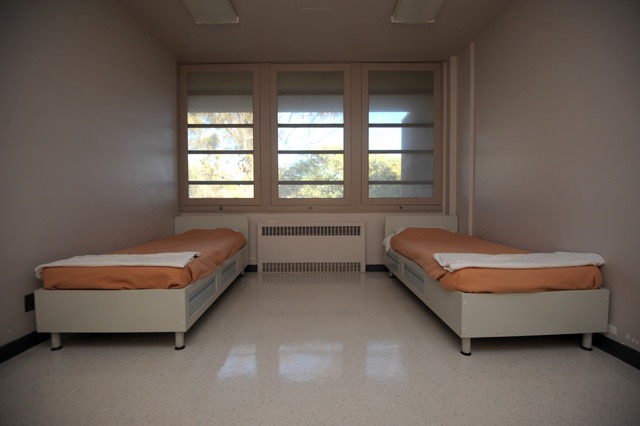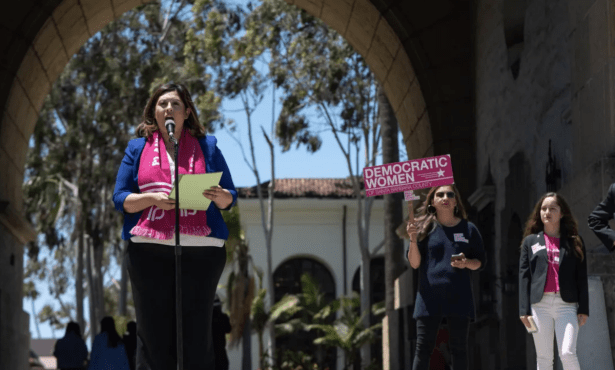At Last, Some Good News for Santa Barbara Mental Health Workers
Feds May Allow More Beds in County Facility for 5150 Patients

Talk about timing. The same week a 20-year-old young man leaped to his death off the Cold Spring Bridge — fenced off years ago specifically to prevent such occurrences from happening — the county supervisors got an update on the status of the county’s Psychiatric Health Facility (PHF), a lockdown facility licensed to treat people who pose an imminent threat to themselves or others. While the tone of the report was decidedly upbeat — and genuinely good news appears to lie on the horizon — the overall picture remains mixed and the implications are far from obvious.
First, the good news: In the last surprise audit by state inspectors, not a single problem was found related to the environment of the care facilities. According to Behavior Wellness department head Toni Navarro, the auditor told her this was the first time in his career he had ever said such a thing. The term he used, she said, was “exemplary.” Supervisors praised the “esprit de corps” among PHF clinicians and administrators, especially given the stressful conditions under which they work. “There are pitfalls and pratfalls everywhere,” stated Supervisor Steve Lavagnino, who also serves on the PHF governing committee. “The next lawsuit is always two minutes away.” Lavagnino, a Republican until Donald Trump was elected, cited the PHF as the ultimate rebuttal to those who argue government should be run more like a business. “This would be about the last business you’d ever get into,” he said.
But the reality remains, as Supervisor Joan Hartmann noted: Given the PHF’s federally imposed size constraints — no more than 16 beds — the county has been long “underserved.” In 2016, a prior PHF administrator estimated Santa Barbara needed at least 40 PHF beds. This shortage has been the subject of numerous grand jury reports over the past 25 years.
As a result, longtime mental health advocate Lynne Gibbs charged that PHF beds have been so stringently “rationed” that Santa Barbara County is the only county in the state where law enforcement officers can’t or won’t issue 5150 findings for those deemed to pose a threat to themselves or others. Too often, she said, law enforcement officers have found themselves forced to book people with serious mental illness into county jail to keep them safe. Gibbs spoke from personal experience with her own daughter, whose life she said was saved by her time in the county’s PHF.
When it comes to admissions and bed-nights at the PHF over the past four years, the numbers are murky, in part because of the intrusions imposed by COVID on places of involuntary accommodation. Boiled down, the total number of admissions dropped from 489 to 337 and the total number of bed-nights dropped from 5,541 to 4,677.
The good news interpretation, according to Behavioral Wellness’s Navarro, is that Marian Regional Medical Center in Santa Maria opened a Crisis Stabilization Unit (CSU) offering 24-hour respite for those in intense distress. In the first year, Navarro noted, Marian treated 330 patients in their CSU. Roughly half the people eligible for a 5150 designation, Navarro added, stabilize after 24 hours.
Santa Barbara County opened a CSU on the South Coast about 10 years ago with a maximum capacity of eight patients, and it saw conspicuously little use. Few in law enforcement knew it was even there; it wasn’t a locked facility; and it was plagued by constant staffing challenges. In short, it was a bust.
Starting next January, the South Coast CSU will be reopened but operated by a private contractor whose identity has not yet been revealed. It will be locked. If all goes according to current hope and prayers, that should take some of the heat off demand for 5150 beds.
On the flip side, the shortage for 5150 beds in the PHF remains sufficiently pinched that the county is forced to farm out five patients a day to acute care facilities elsewhere in the state. But one of those destinations had been Vista del Mar in Ventura County until it was prohibited from taking patients on involuntary holds in October due to a host of chronic problems. The worst involved the release of a patient — against the orders of his psychiatrist — who then suffocated and dismembered his mother.
Vista del Mar was the only place to accept 5150 minors. With Vista del Mar now indefinitely off-limits, relatives of loved ones needing acute care treatment will have to travel a lot farther out of county to visit and stay in touch, a critical component in most recovery regimes.
The good news here is that there’s reason to hope the federal government may license the county’s PHF to treat up to 20 patients at any given time, as opposed to the current 16-patient limit. The process by which this might come to pass is convoluted and slow-moving, but as of October 20, the state’s Department of Health Care Services filed a request with the federal government for a waiver to the 16-bed rule. That limit was enacted decades ago to prevent large-scale institutional warehousing that gave rise to such Hollywood film frights as Shock Corridor.
In the meantime, however, two-thirds to three-quarters of Santa Barbara’s PHF patients have not fit the description of people who pose a threat to themselves or others. Rather, these are individuals with long-term chronic and debilitating mental-health challenges with precious few places to go in the state or the county. Many are elderly or getting there. Supervisor Hartmann noted that if Santa Barbara’s elderly population doubles in the next five to seven years — as she said is expected — this population could pose an exceptional strain on the county’s limited mental-health infrastructure.
With the county now exploring a massive grand plan to consolidate as much of the county’s many office buildings and land holdings onto land it owns off Calle Real, Gibbs urged the supervisors to give serious thought to building new long-term mental health beds out there. With the governor pushing a $6.4 billion ballot measure in March to create housing for homeless people with mental illnesses, she said, “The timing could be fortuitous.” To not provide for it, she added, would be “foolish.”



